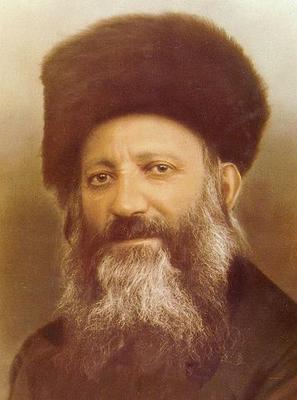Wednesday, September 07, 2005

Today, the 3rd of Elul, is the 70th yahrzeit [anniversary of the passing] of HaRav Avraham Yitzchak HaKohen Kook Zt"l. Although he is not known to have composed niggunim, Rav Kook often expressed himself - perhaps most deeply - through his poetry. And, perhaps somewhat poetically, it can be said that his entire life was a song, and that his Soul Sang with a Unique Melody.
Indeed, it is Rav Kook's commentary on Tehillim [Psalm] 30 that has clarified for me the interplay between Mizmor and Shir, melody and lyrics, that has sometimes been so very puzzling to me. Here it is:
Psalm 30: Mizmor Shir: Melody and Song
"Psukei d'Zimra", the preliminary series of Psalms introducing the morning prayers, opens with the words, "Mizmor shir":
"A melody ('mizmor'), a song ('shir') for the Temple inauguration, to David". [Ps 30:1]
What is the difference between mizmor and shir? Why is this phrase appropriate for our daily initiation into prayer? And what is the connection to the Temple dedication?
Heartfelt emotion, emanating from the depths of the soul, lies hidden in the crevices of life. When these feelings burst forth, they cannot be composed into words and expressed by speech. Without thought, we happily hum a tune. We give voice to our emotions through zemer, in the notes of a tune or melody. This is mizmor, the musical outpouring of the soul.
As our feelings expand and become more revealed, they connect with our powers of thought and cognition. They reach the treasury of language and speech. This is the level of shir, song and poetry. We can now articulate the outburst of emotion using our mental faculties of reason and language.
When we join together "mizmor shir", we link our emotional and intellectual sides. First, mizmor, musical expression from the depth of emotion and outpouring of the soul. Then, shir, poetic expression from holy meditation and thought.
When we enter our house of prayer, we need to aspire to the sublime ideal of "mizmor shir". We should fully awaken our emotional and intellectual potential for praise and joy. These two holy faculties achieved their greatest expression when the place most suitable for spiritual elevation was completed - at the dedication of the Holy Temple in Jerusalem. "A melody, a song, for the Temple inauguration."
[adapted from Olat Riyyah I:186]
My thanks to Chanan Morrison, and his excellent website, for this. Chanan's divrei Torah, usually translations and excellent compilations from various writings of Rav Kook, can also be found on Arutz-7's English website, in the Torah section.
Finally, there actually is a recording of "Shirei HaRav Kook Zt"l" - Rav Kook's songs. It consists of ten of his poems that were set to music, by A. Schreiber, who was also the producer; David Leibowitz, who also conducted the choir; and Meir Shimon Geshuri, who's authored several books about Chassidic negina, including "Negina v'Chassidus B'veis Kuzmir U'vnoseha - Melody and Chassidus in the House of Kuzmir and its Offshoots." (The "offshoots" refer to Zvolin [son of the Kuzmirer Rebbe] and Modzitz - the first Modzitzer Rebbe being the grandson of the Kuzmirer Rebbe.) This recording was issued by Gal-Paz in 1985, on the occasion of Rav Kook's 50th yahrzeit. Zechuso yagein Aleinu - May his merit protect us!